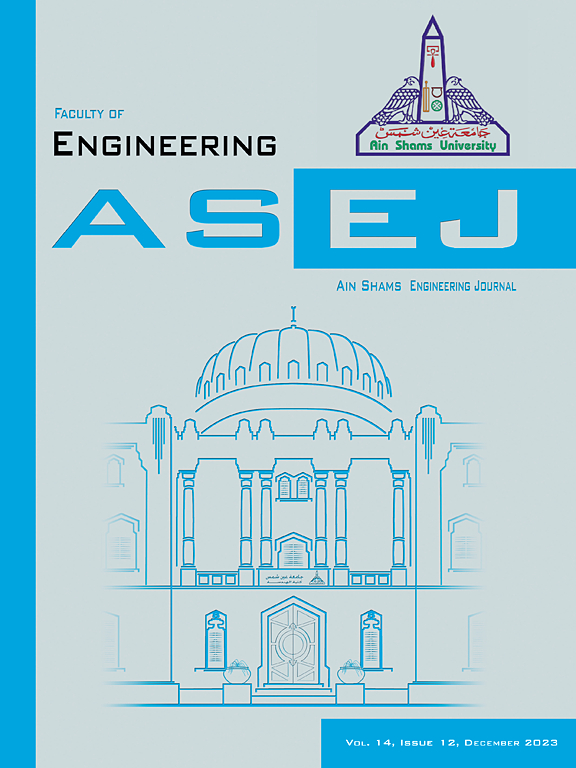Unraveling health impacts of individuals in industrial zones: Leveraging game theory-based LSTM approach for predictive analysis of public health dynamics
IF 5.9
2区 工程技术
Q1 ENGINEERING, MULTIDISCIPLINARY
引用次数: 0
Abstract
In recent years, the proliferation of industrial zones has raised concerns about the potential health impacts on nearby populations. Understanding and predicting these effects are crucial for policymakers and public health officials to implement targeted interventions. This study proposes a novel approach that combines game theory and Long Short-Term Memory (LSTM) networks to unravel the complex dynamics of public health in industrial zones. By incorporating game theory into predictive analysis, it can capture the multi-agent nature of decision-making processes that influence public health outcomes in industrial areas. Additionally, LSTM networks, a type of recurrent neural network, is well-suited for modeling the temporal aspects of health dynamics. The proposed framework uses historical data on industrial activities, environmental factors, demographic characteristics, and health outcomes to train the LSTM model. By integrating game theory principles, the model considers the strategic behavior of different factors and their impact on public health indicators over time. Through iterative learning and optimization, the model can generate predictive insights into future health trajectories in industrial zones. This application-driven framework leverages existing synergies between game theory and deep learning to model the strategic and temporal dynamics of public health in industrial zones. Overall, the integration of game theory and LSTM-based predictive analysis offers a promising avenue for understanding and addressing the health impacts of industrialization. The proposed method is implemented in Python software and has an accuracy of about 99.12 % which is 3.1 % higher than other existing methods like HealthFog, Conv LSTM and GoogleNet- Deep Neural Network (DNN).

揭示工业区个人健康影响:利用基于博弈论的LSTM方法对公共卫生动态进行预测分析
近年来,工业区的扩散引起了人们对附近居民健康潜在影响的担忧。了解和预测这些影响对于决策者和公共卫生官员实施有针对性的干预措施至关重要。本研究提出了一种结合博弈论和长短期记忆(LSTM)网络的新方法来揭示工业区公共卫生的复杂动态。通过将博弈论纳入预测分析,它可以捕捉到影响工业领域公共卫生结果的决策过程的多主体性质。此外,LSTM网络是一种递归神经网络,非常适合于健康动态的时间方面建模。拟议的框架使用有关工业活动、环境因素、人口特征和健康结果的历史数据来训练LSTM模型。通过整合博弈论原则,该模型考虑了不同因素的战略行为及其对公共卫生指标的影响。通过迭代学习和优化,该模型可以对工业区未来的健康轨迹产生预测性的见解。这个应用驱动的框架利用博弈论和深度学习之间现有的协同作用,对工业区公共卫生的战略和时间动态进行建模。总的来说,博弈论和基于lstm的预测分析的整合为理解和解决工业化对健康的影响提供了一条有前途的途径。该方法在Python软件中实现,准确率约为99.12%,比现有的HealthFog、Conv LSTM和GoogleNet- Deep Neural Network (DNN)等方法高3.1%。
本文章由计算机程序翻译,如有差异,请以英文原文为准。
求助全文
约1分钟内获得全文
求助全文
来源期刊

Ain Shams Engineering Journal
Engineering-General Engineering
CiteScore
10.80
自引率
13.30%
发文量
441
审稿时长
49 weeks
期刊介绍:
in Shams Engineering Journal is an international journal devoted to publication of peer reviewed original high-quality research papers and review papers in both traditional topics and those of emerging science and technology. Areas of both theoretical and fundamental interest as well as those concerning industrial applications, emerging instrumental techniques and those which have some practical application to an aspect of human endeavor, such as the preservation of the environment, health, waste disposal are welcome. The overall focus is on original and rigorous scientific research results which have generic significance.
Ain Shams Engineering Journal focuses upon aspects of mechanical engineering, electrical engineering, civil engineering, chemical engineering, petroleum engineering, environmental engineering, architectural and urban planning engineering. Papers in which knowledge from other disciplines is integrated with engineering are especially welcome like nanotechnology, material sciences, and computational methods as well as applied basic sciences: engineering mathematics, physics and chemistry.
 求助内容:
求助内容: 应助结果提醒方式:
应助结果提醒方式:


